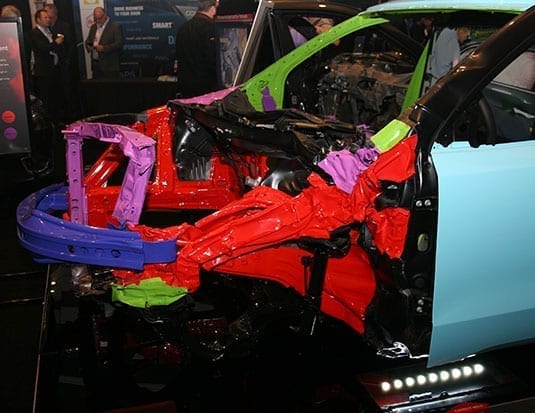Collaboration is an essential part of the modern collision repair industry.
Communication is essential in times of rapid change! When industry stakeholders are on the same page, it makes it possible to find new and better ways to work together, support one another, and ensure that we are doing the right thing for our shared customers. Vehicle complexity is driving significant change in the collision industry. It’s one of the main reasons that OEM Certification has become so important in a short period of time. Just two years ago OEM Certification was reserved for luxury brands, and very few shops in Canada were participating in these programs. Today, mainstream vehicle manufacturers like FIAT Chrysler, Ford, Nissan, Kia, Honda, Toyota, and VW have introduced large-scale OEM Certification programs. The focus is on ensuring the industry can provide safe repairs to OEM specifications, ensuring the fit, finish, durability, functionality, value, and safety of collision damaged vehicles is restored. Without the right tools, equipment, training and repair information, the bottom line is that lives are being put at risk by substandard repairs. How can we help one another?
Insurers
First, insurers can embrace the new reality. Accept that not all shops today are qualified to repair current model vehicles. OEMs have identified the minimum requirements for OEM Certification, based on what is needed to repair a car properly. Second, they can communicate the needs for shops to make the investments required for OEM certification, to ensure they are referring their customers to a qualified facility. Insurers may want to re-evaluate their DRP arrangements, and ensure their staff send repairs to the right shops—those that have the equipment, tools and training for that specific make/model repair. Insurers also need to have conversations with their insureds, to provide guidance on selecting a qualified repairer, especially when their vehicle needs structural repair, or is a current model vehicle that will require specific equipment and training to repair aluminum, high strength steel, carbon fibre or mixed-material damage.
Repairers
There are hundreds of shops across the country—in every Province—that have taken the steps to become OEM Certified, and for this they deserve recognition! But, there is a responsibility for the shop to communicate this to not only consumers in their market, but also insurance partners, insurance brokers, and fleet account managers. As a highly qualified shop you need to educate the stakeholders you work with, and ensure they understand the importance of a safe and proper repair.
Suppliers
OEM Certification provides suppliers with a unique opportunity to strengthen relationships with the shops they work with. By understanding what is required for a shop to become OEM Certified, and then providing education and guidance, you are helping your customers strengthen their business. As a trusted advisor, you can help them determine the right OEM Certification for their business, assist in selecting the right equipment, assist in training their staff on the equipment, provide guidance with process improvement to increase profitability, and provide options for financing the purchase of tools and equipment.
Doing the right thing
Together, industry stakeholders can continue to embrace change and evolve to be better. We can share information, have honest discussions, provide guidance and support, and work towards the goal of an industry that is technically advanced, ready and able to repair cars today and tomorrow.



